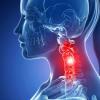
Breaking News
 The Hidden Secrets of Natural Milk
The Hidden Secrets of Natural Milk
 Diddy Trial Drama: Star Witness Vanishes Ahead Of Explosive Testimony
Diddy Trial Drama: Star Witness Vanishes Ahead Of Explosive Testimony
 PTSD treatment that excites a nerve in your neck wipes symptoms completely
PTSD treatment that excites a nerve in your neck wipes symptoms completely
 High-tech lactation pad measures medication in mothers' milk
High-tech lactation pad measures medication in mothers' milk
Top Tech News
 Cab-less truck glider leaps autonomously between road and rail
Cab-less truck glider leaps autonomously between road and rail
 Can Tesla DOJO Chips Pass Nvidia GPUs?
Can Tesla DOJO Chips Pass Nvidia GPUs?
 Iron-fortified lumber could be a greener alternative to steel beams
Iron-fortified lumber could be a greener alternative to steel beams
 One man, 856 venom hits, and the path to a universal snakebite cure
One man, 856 venom hits, and the path to a universal snakebite cure
 Dr. McCullough reveals cancer-fighting drug Big Pharma hopes you never hear about…
Dr. McCullough reveals cancer-fighting drug Big Pharma hopes you never hear about…
 EXCLUSIVE: Raytheon Whistleblower Who Exposed The Neutrino Earthquake Weapon In Antarctica...
EXCLUSIVE: Raytheon Whistleblower Who Exposed The Neutrino Earthquake Weapon In Antarctica...
 Doctors Say Injecting Gold Into Eyeballs Could Restore Lost Vision
Doctors Say Injecting Gold Into Eyeballs Could Restore Lost Vision
 Dark Matter: An 86-lb, 800-hp EV motor by Koenigsegg
Dark Matter: An 86-lb, 800-hp EV motor by Koenigsegg
 Spacetop puts a massive multi-window workspace in front of your eyes
Spacetop puts a massive multi-window workspace in front of your eyes
High-tech lactation pad measures medication in mothers' milk

According to scientists at the University of Southern California (USC), overuse of acetaminophen is the leading cause of acute liver failure in US children. It therefore stands to reason that infants, whose livers are less developed than those of older children, are even more susceptible to the ill effects of the drug.
Because acetaminophen is often prescribed to mothers who are experiencing pain after giving birth, it's inevitable that some of the medication will make its way through to the infant in the breast milk.
Typical concentrations are generally considered to be safe, although mothers taking higher doses can get their milk tested at labs in order to be sure. Lab tests take time, however, and aren't practical for mothers living in remote or otherwise resource-limited locations.
That's where the new USC-developed pad comes in.
Lactation pads are something that are already worn by most mothers in First World countries, in order to soak up the milk that leaks out of the breasts between feedings. In this case, however, the disposable pad contains paper-based microfluidic channels that draw milk from a ringed collection area on the skin-side of the pad, through to a sensor unit on the outside.
Utilizing LIG (laser-induced graphene) electrodes and an integrated flexible potentiostat, the sensor performs an electrochemical analysis of the milk, determining its acetaminophen levels. Those readings are wirelessly transmitted to an app on the mother's smartphone, which provides a real-time readout.
In a more basic alternate setup, a potentiostat-less version of the pad can simply be hardwired to a portable potentiostat for a one-time reading before being disposed of. That reading is still relayed to the app.
In either case, if the detected levels are dangerously high, the mother can opt to pump and discard the milk. She can then feed the infant earlier-pumped stored milk, or formula, until her acetaminophen levels are safe again.
"Our device represents a major innovation," says Asst. Prof. Maral Mousavi, first author of a paper on the study. "It is the first wearable tool for direct biochemical analysis in breast milk and the first lactation pad embedded with real-time sensing technology."

 Node without Consent
Node without Consent

